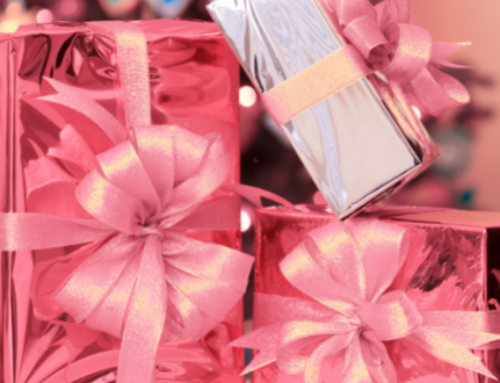I recently participated in the Cherry Blossom Princess Program in Washington, D.C., a week-long program that offers cultural, educational, and professional development opportunities for rising young women leaders between the ages of 19 and 24 from around the United States and the world. It is a celebration of the friendship between the United States and Japan and usually takes place during the National Cherry Blossom Festival in Washington, D.C. Due to the COVID-19 pandemic, the National Conference of State Societies (NCSS), which hosts the Cherry Blossom Princess Program, decided to wait until June to hold the program after it was canceled in 2020.
Throughout the week, women get to learn more about Japan, learn how to be a strong female leader, meet and speak with important leaders, and so much more. It was truly an honor to represent my home state of Utah, and I believe every young woman should apply and participate in the Cherry Blossom Princess Program.
History
In 1912, Tokyo Mayor Yukio Ozaki gifted 3,000 cherry trees, which were planted by First Lady Helen Taft and the wife of the Japanese Ambassador. The first Cherry Blossom Festival was held in 1927, and civic groups expanded the festivities in 1935. In 1939, the first four Cherry Blossom Queens were selected by the Cherry Blossom Festival Committee of the Washington Board of Trade for 1939, 1940, 1941, and 1947. Since 1948, NCSS began selecting Queens with the random spin of a “wheel of fortune” in 1948 with states on it. Whoever is selected as Cherry Blossom Queen usually has the opportunity to visit Japan and represent the program at various cherry blossom events around the country.
Due to World War II, there was no Cherry Blossom Festival in Washington, DC for the years 1942-1945. The Japanese Stone Lantern was gifted to Washington, DC in 1954 to commemorate the 100th anniversary of Japan’s and America’s first treaty.
Several members of Congress were Cherry Blossom Princesses, including Senator Lisa Murkowski of Alaska and Senator Shelley Moore Capito of West Virginia.
Experiences and the Week
The week began with an orientation and a sashing ceremony. We had the opportunity to meet young women from around the country, and one came from the Republic of Kosovo. I wore my pink Utah sash with pride as I grew up, served, and attended school there. Usually, the Queens who come from Japan come to the United States, as well, but due to the pandemic, they only sent us greeting videos. We also started to have our pins from our states and territories handed out. After that, we attended the lantern lighting ceremony by the Tidal Basin, where the cherry blossoms usually are between March and April. There were remarks by the Ambassador of Japan, the president of NCSS, the Cherry Blossom Queen, and the Cherry Blossom Princess Program director. After that, the stone lantern was lit by the Cherry Blossom Princess selected by the Japanese Embassy.
The next day, we had the opportunity to hear from the Institute of Peace on how we can use non-violent solutions to make the world a better place. After that, there was a kimono and origami demonstration. I was asked to be part of the kimono demonstration, and as beautiful kimonos are, it sure was tight. Nonetheless, I loved wearing it for several hours. For the afternoon, we had a women’s empowerment conference where we learned how to develop ourselves as young professional women and hear advice from those who have been in the workplace for a long time. Some of the speakers included Senator Capito, Congresswoman Kat Cammack, and Montana Lieutenant Governor Kristen Juras who were all virtual, then several other professional women. During the conference, we had breakout groups where we could ask questions on being a working woman and how to deal with various situations in the workplace.
The third day was the shortest day of the entire program. Usually, there is a Congressional Reception where a member of Congress escorts the princesses, but the U.S. House was out of session during the program. I still ended up meeting with both of my senators on Capitol Hill and told the staff in their office more about the program. After that, we had our luncheon and tea party, where a traditional Japanese tea ceremony was performed, as well as a Lilly Pulitzer Fashion Show with new outfits.
On Wednesday, we had an opportunity to go around the city, including the Congressional Club, Japanese American Memorial to Patriotism, have photos taken in front of the Capitol and the Washington Monument, then the new Dwight D. Eisenhower Memorial. At the Congressional Club, we received a brief tour of the building and learned about its history. Established in 1908, the purpose of the club was to provide a setting for friendships among the spouses of members of Congress in Washington, D.C. The current president is Senator Capito’s husband, Charles Capito. At the Congressional Club, we viewed an ikebana (flower arrangements) demonstration and learned Japanese greetings.
When the final day of the program came, we did not realize that the week had gone by quickly. That morning, we heard from a former Cherry Blossom Princess about how to be a woman in a male-dominated field. After that, we signed our state’s books that would be delivered to a school for children with disabilities. In the previous years, the princesses would visit the school in person and read their books to the children, then we heard more about the Cherry Blossom Princess alumni program and how to get involved. We then voted for Miss Congeniality and practiced for the Grand Ball that evening, then of course, the Grand Ball finally came. I had the honor of singing the United States National Anthem after the Japan National Anthem. Usually, the princesses would have escorts as they entered the room, but I still ended up bringing my boyfriend as my guest. After the meal, announcements, greetings, and awards, it soon was time to select the Cherry Blossom Queen by the “wheel of fortune”. At this moment, Miss Congeniality was announced, then the wheel was spun for the first runner-up, which ended up being Miss District of Columbia. The wheel was spun for the Queen, which ended up being Miss Missouri. She then was crowned, then everyone congratulated her and the other winners that evening. We then said our goodbyes that evening and the next morning.
Overall, I loved every single moment of the program. I am grateful for all the women I met, learning about history and other cultures, and finding ways how to be a strong but still feminine.
How to Apply
Next year’s Cherry Blossom Princess Program will take place between April 3 – April 9, 2022 during the Cherry Blossom Festival. Applications will be available starting in the fall. You must be between the ages of 19 and 24 to be considered. Some states and territories also require extra steps to qualify for the program, so it is wise to contact your state societies. Some states have inactive programs, and some states also have their own ceremonies for the selection of the princesses.
In order to represent your state or territory, you need to meet at least one of the following criteria: You should be born in the state or territory that you will represent, be an immediate family member of a Native of the state or Territory you will represent, a resident of that state, or spent a lot of time in the state or territory you will represent.
After you are selected, you will be required to pay a program fee, which includes transportation, food, tickets for events, and materials. State societies can take of these fees, or you can fundraise or find a sponsor to pay for those fees. You will also have to buy a children’s book about your home state and provide around 70 pins, then get a white gown for the Grand Ball.
Then, you will then have several virtual meetings about what to expect during the program, what to wear, and what to bring. You are not allowed to wear outfits that have a significant amount of black, brown, navy blue, or grey; and the outfits have to be tasteful in appearance. I primarily wore bright blue and pink dresses throughout the week along with some cute fascinators and hats.
Remember that you are representing your state and territory and that this is not a competition or a pageant. Have fun, be yourself, and get to know everyone!
Frances F
CABINET











